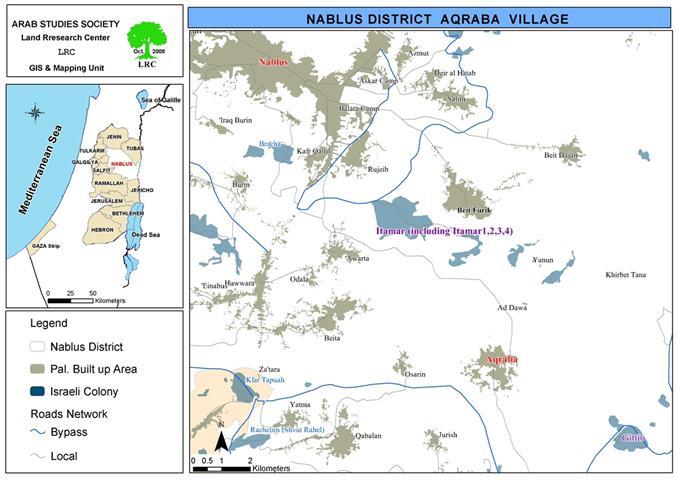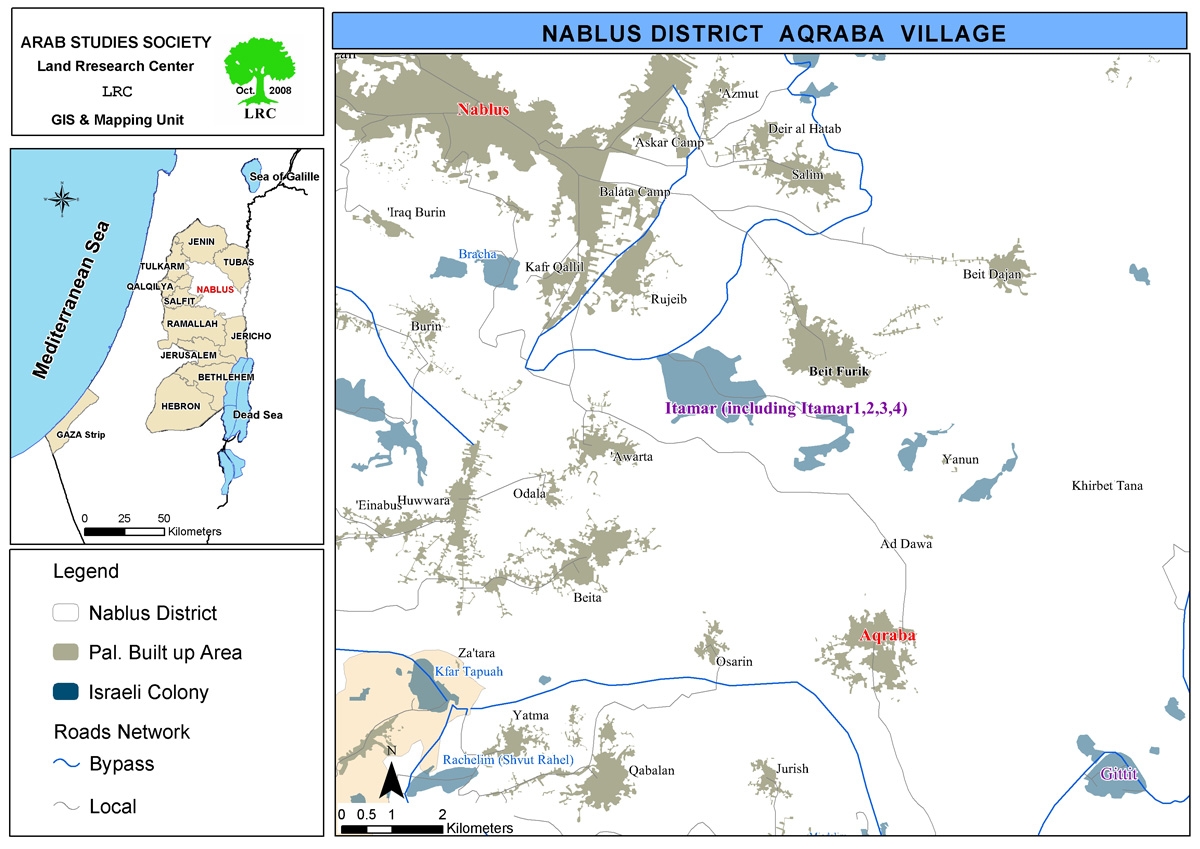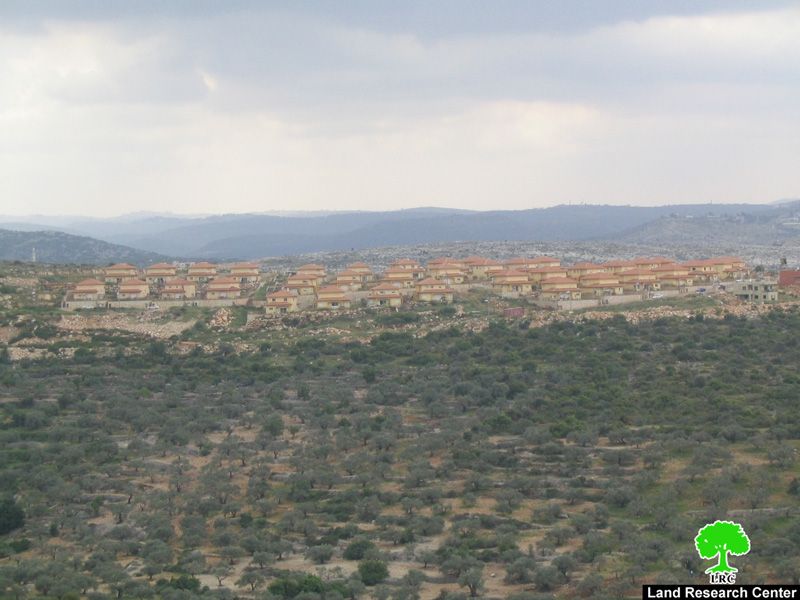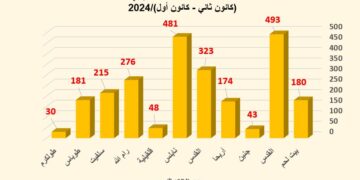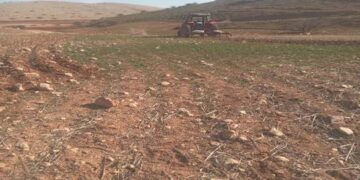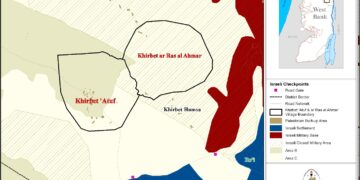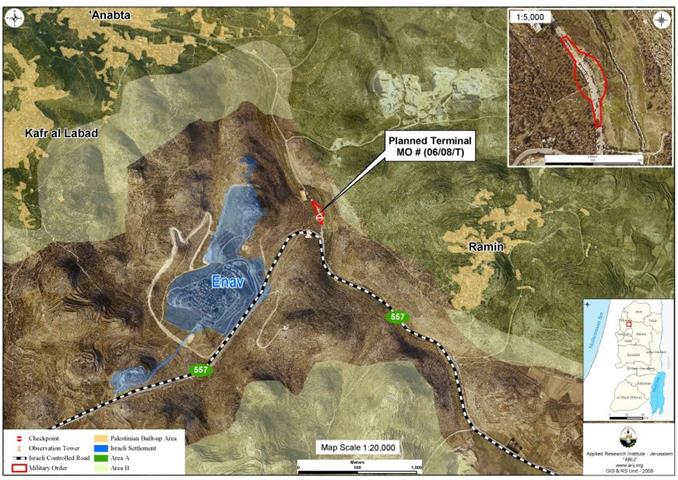On the 27th of September, 2008 the Palestinian 18-year old Attiya Bani Minya went out of his house in the village of Aqraba to the area of Houd Al Fajam 10 kilometers east of the village. He used to graze his sheep in that area of the Jordan Valley to assist his 10 –member family in which he is the eldest brother. He was not aware that that day would be his last.
The area of Houd Al Fajam is around 30,000 dunums most of which are used for grazing purposes by herder from the village of Aqraba as well as nearby Bedouin communities. Yehya, as well as more than 40 herders, used to graze their sheep in that area year round due to its suitable climate.
Itamar Colony
On-site eye-witnesses indicated that they have seen Yehya grazing his sheep in the area. They have also pointed out the presence of a white vehicle carrying colonists from the colony of Itamar on the by-pass road connecting between Huwwara military camp and By-Pass Road 60. It is worth noting here that the area is located 10 kilometers away from the colony of Itamar and 3 kilometers from the colony of Jentit. Palestinian villagers indicated that after the sun sat on that day, the sheep came back home but without Yehya. In reaction, a large group of villagers went out to look for him. They found him dead in one of Al Houd valleys. The body of the martyr was found with more than 20 bullet holes.
It was not the first time that a herder from the village was killed by colonist; in early 2006 Mr. Mohammad Hamdan Bani Jaber was killed in the area of Al Arama located 9 kilometers west of the village of Aqraba and about half a kilometer away from the colony of Itamar. He used to work as a herder and he was killed in similar circumstances as Mr. Yehya.
The head of Aqraba Village Council expressed the following to Land Research Center's field researcher: ' The deliberate targeting of herder and farmers in the area will not affect our resolve and determination to regain our right to access and use our agricultural lands. On the contrary, these vicious acts will push to hold on to our lands in the face of continued and accelerated colonial expansion
The Colony of Itamar and its Danger on Nearby Palestinian Villages:
The colony was established in the late 1970s in the aftermath of the decision of the so-called Israeli High Court of Justice to remove a colony nuclei from the lands of the village of Rojib and to place it on the lands of the village of Dier Al Hatab. The new nuclei was re-named Itamar in 1984. It was inhibited by students from the Meir Institute in Jerusalem who initially called the colony Haiem Hill as a sign of the resumption of what they termed 'Jewish life' in the location. The initial colonists believed that the location is tied to Itamar Benhas and the 70 Sheikhs, according to the Jewish history and tradition.
The colony today rests upon lands confiscated from the towns and villages of Awerta, Beit Foreek, Al Yanoon and Rojib in addition the village of Aqraba. The build-up area of the colony is about 3097.8 dunums in which 557 colonists are currently living.
It is worth pointing out that the colony of Itamar is currently connected with Huwwara military camp via a by-pass road due to their close proximity to each other. The same road connects the colony with the colony of Elon Moreh as well as with thousands of dunums in the Jordan Valley that are considered to be Closed Military Zones. This intertwined connection between the colonies gives a clear evidence of the lack of any intention of Israeli occupation forces and authorities to withdraw from the region in the near or far futures. On the other hand, the local council of the colony of Itamar has started since September 2008 a campaign to enlarge the colony via placing a number of mobile caravans on the northern hills of the village of Aqraba as a preliminary step to expand the colony on the expenses of Palestinian land owners.
Aqraba Village: General Information
The village of Aqraba is located 18 kilometers southeast of the City of Nablus. The current area of the village is 34,000 dunums of which 13,000 dunums constitute its build-up area. Around 62% of its lands are planted with olive and almond trees while 8% are used for seasonal planting and the remaining 30% are used for grazing purposes.
A number of smaller villages and hamlets surround the village and are considered to be natural extensions of Aqraba (population: 7707). These hamlets include Khirbet Al Arama, Al Kroom, Khirbet Abu Al Reisa, Khirbet Al Rujman, Khirbet Firas Al Dien in addition to Khirbet Tal Al Khashaba. The total population of these hamlets is estimated to be 500 Palestinians. A number of clans live in the village including Bani Jaber, Al Mayadima, Bani Jame', Bani Fadel and Al Deili.
The unemployment rate in the village exceeds 50% due to the policies implemented by the Israeli occupation since the beginning of the current Intifada including the prevention of access to 1948 Palestinian and the closure regime. Such a regime forced residents of the village to rely on agriculture, private and public sectors as the main sources of income in addition to some industrial workshops scattered here and there in the village.
Prepared by:
The Land Research Center
LRC


